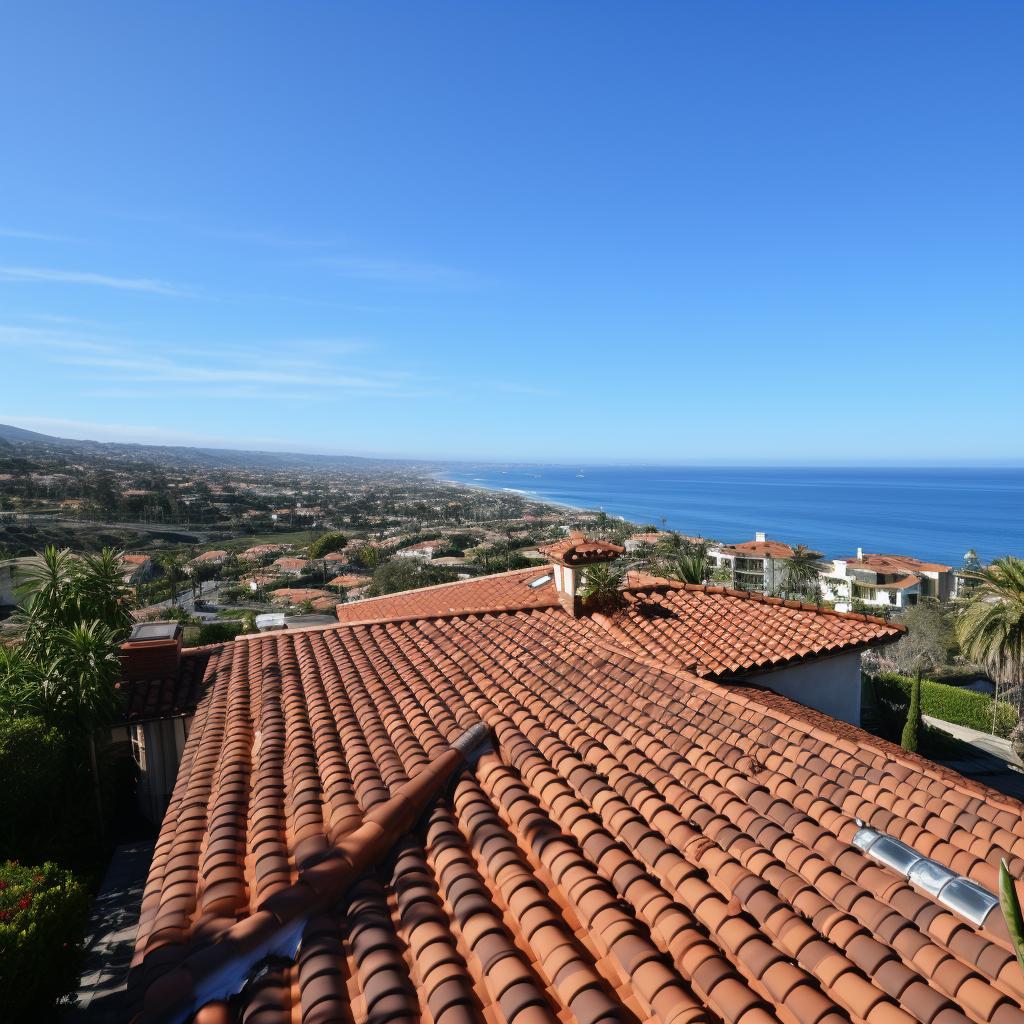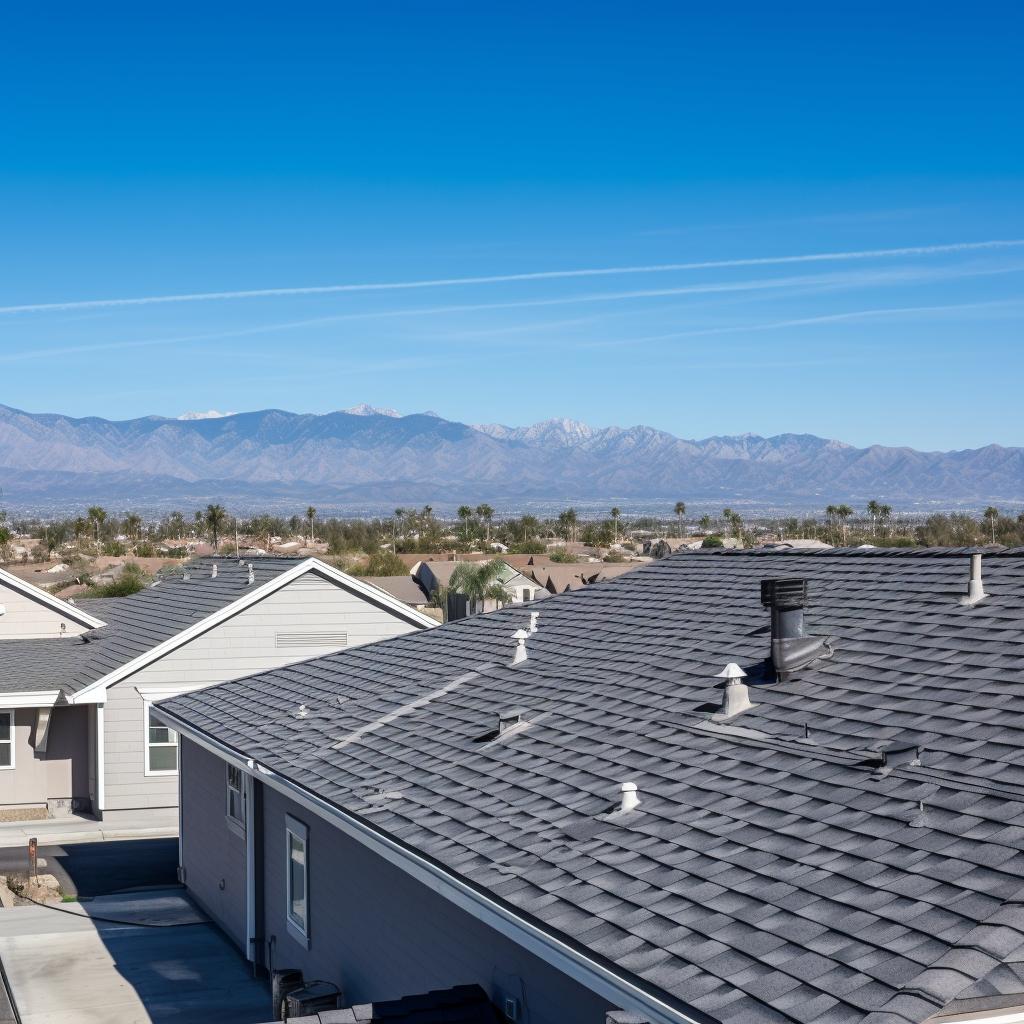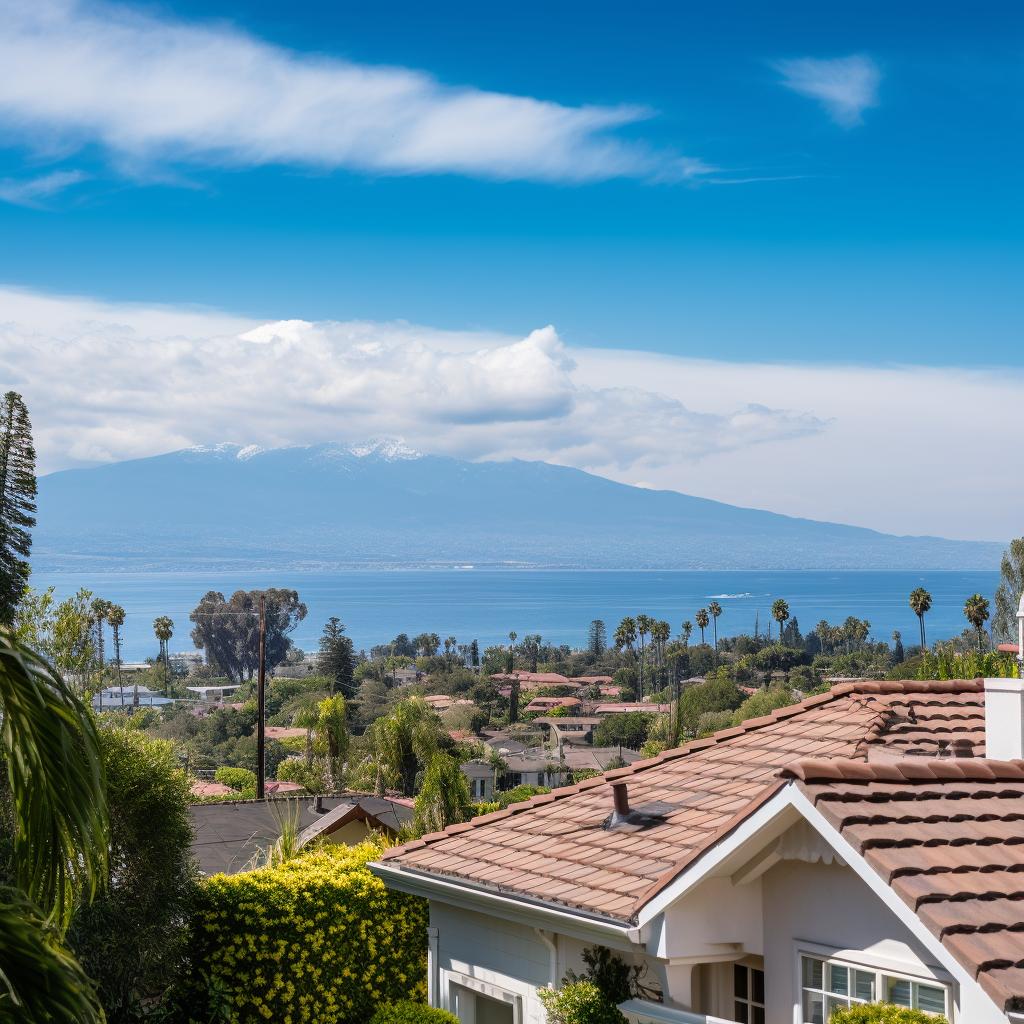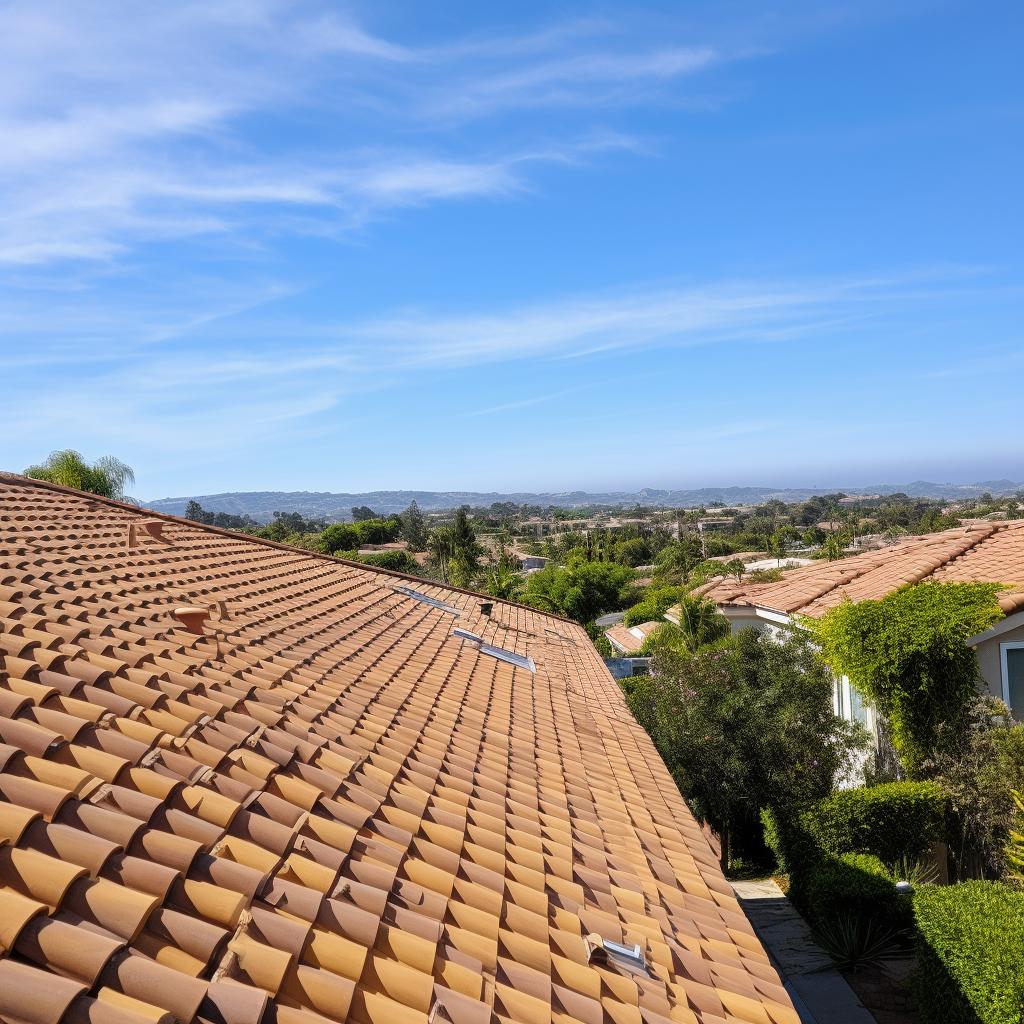When it comes to harnessing energy, the sprawling expanse of Ontario has quietly cultivated a firm stance towards sustainability. At the heart of this green revolution lies a secret that’s steadily illuminating homes and businesses: solar roofs, representing an untapped frontier for clean power generation. The magic ingredient? Commercial roofing in Ontario-proven by early adopters to be not just viable, but essential as part of a future-focused energy strategy.
Indeed, this Canadian province’s commitment to sustainable energy is not just words on paper; it reflects in its legislation, community initiatives, and in the ever-widening embrace of renewable sources among its populace. As fossil fuel dependency becomes more criticized globally, Ontario takes confident strides with solar power taking center stage as the alternative of choice-an elegant solution balancing environmental stewardship with economic savvy.
Introducing solar roofs into this energetic tow positions them as game-changing utilities in the quest for a greener province. They are not merely aesthetic enhancements or technological novelties.
Solar roofs represent a paradigm shift in how people think about and interact with the electricity that powers their daily lives-bringing forth opportunities for cleaner air, stronger economies, and more resilient communities standing bold against climate change. The story of these installations is one that weaves together tales of innovation, practical benefit, and an unwavering march toward eco-friendly horizons.
Unveiling Solar Roofs
Solar roofs are becoming an increasingly attractive option for homeowners and businesses looking to reduce their environmental footprint and capitalize on the benefits of renewable energy. Unlike traditional roofing materials, solar roofs integrate photovoltaic cells that capture sunlight and convert it into electricity. This innovative solution is revolutionizing how we think about roofing and energy production.
Understanding Solar Roofs
At its core, a solar roof is designed with functionality in mind. It’s not just a layer of protection against the elements; it’s a power generator that sits atop your building. The key difference between solar roofs and conventional roofing is the integration of solar technology directly into the roofing material.
While traditional roofs simply act as a barrier from weather conditions, solar roofs take advantage of the exposure to sunlight by incorporating photovoltaic modules that are either built into or mounted onto the roofing structure. These modules contain numerous solar cells made typically of silicon which reacts with photons from sunlight to produce electricity.
The components that make up a solar roof system include the photovoltaic cells themselves, an inverter to convert the direct current (DC) generated by the cells into alternating current (AC) for use in homes or businesses, mounting hardware, and often a battery storage system to retain excess energy generated during peak sunlight hours. Additionally, there may be monitoring systems in place to track energy production and consumption, further optimizing efficiency.
Electricity Generation From Solar Roofs
Solar roofs generate electricity through what is known as the photovoltaic effect-a process by which materials can generate an electrical current when they’re exposed to sunlight. In practice, when sunlight hits a solar cell on a roof, it knocks electrons loose from their atoms. As these free electrons move through an electrical circuit embedded within the cell, they create electric power.
This power can be immediately used by your house or business establishment thereby reducing reliance on grid-based electricity supplies. Any surplus can either be stored in batteries for later use or fed back into the public grid which could result in further economic incentives depending upon local policies. Moreover, this form of direct generation means less transmission loss since electricity produced via solar roofs does not have to travel long distances from large centralized power plants.
In summary, unveiling what lies beneath a typical rooftop reveals an elegant system capable of converting one form of natural energy into another-an ecological transformation impacting individual structures all across Ontario along with ambitious green initiatives throughout provincial industries such as commercial roofing Ontario markets are supporting more than ever before.
The Benefits of Solar Roofs for Homeowners and Businesses
Solar roofs offer a myriad of advantages that align with the global shift towards sustainable living. For homeowners and businesses in Ontario, this translates into tangible environmental benefits. The implementation of solar technology on roofing surfaces significantly contributes to the reduction of carbon emissions.
By generating clean energy directly from the sun, solar roofs help to diminish the reliance on fossil fuels, which are a major contributor to greenhouse gas emissions and climate change. This eco-friendly alternative is an effective way for individuals and organizations to actively participate in environmental conservation.
The economic incentives associated with solar roofs can be quite substantial as well. Installing a solar roof system may result in considerable savings on electricity bills due to the ability to generate one’s own power rather than purchasing it from the grid at market rates.
Moreover, there are potential financial incentives available from various levels of government aimed at encouraging renewable energy adoption. These can include rebates, tax credits, and grants that reduce the initial investment cost for installing solar roofing systems.
One often overlooked benefit of incorporating solar roof technology is the increase in property value and appeal in the real estate market. Properties equipped with solar panels are seen as modern and efficient-a desirable trait for potential buyers or tenants who are environmentally conscious or seeking lower utility costs. This enhanced marketability not just sweetens real estate transactions but also serves as an attractive asset for any business looking to project an image of sustainability.
| Benefit Type | Description |
|---|---|
| Environmental Impact | Reduction in carbon footprint due to decreased reliance on fossil fuels. |
| Economic Savings | Potential reduction in electricity bills; access to financial incentives. |
| Property Value Increase | Homes equipped with solar roofs can experience a higher market value and increased buyer appeal. |
Embracing these benefits effectively positions homeowners and businesses not only at the forefront of innovation but also as responsible stewards of their environment-playing a crucial part in Ontario’s journey toward sustainability through commercial roofing Ontario initiatives and residential adaptations alike.

Commercial Roofing Ontario Embraces Solar Technology
Ontario’s commercial sector has seen a significant shift toward more environmentally responsible practices, solar technology adoption being at the forefront. The surge in commercial properties integrating solar roofs attests to the fact that businesses are not only eager to cut down on energy costs but also willing to partake in the province’s drive towards sustainability.
These structures, equipped with photovoltaic panels, are capable of harnessing the sun’s power directly above businesses’ heads, representing a leap forward in green energy utilization within the industry.
| Year | % Increase in Commercial Solar Roof Installations |
|---|---|
| 2019 | 15% |
| 2020 | 20% |
| 2021 | 25% |
Success stories abound when highlighting commercial roofing Ontario projects that have integrated solar technology. For instance, large warehouses have managed to cut their operational costs significantly by tapping into solar power for their daily operations. Case studies show that even modest-sized businesses can recover installation costs within a few years while reaping the rewards of low-cost electricity thereafter. Such projects also showcase advancements in photovoltaic technologies ensuring reliability and efficiency even during Ontario’s diverse climatic conditions.
Long-term benefits for businesses going green with solar extend beyond mere cost savings; they contribute markedly to corporate social responsibility goals by reducing the carbon footprint associated with traditional energy consumption processes. Additionally, companies that adopt sustainable practices often experience a positive response from consumers who prefer doing business with eco-conscious brands.
Given the collective benefits alongside provincial and federal support for renewable energies, it’s clear why an increasing number of Ontario’s commercial entities are moving quickly to embrace this sun-powered revolution on their rooftops.
Government Incentives and Support for Solar Roofs in Ontario
Ontario’s government has been a proactive promoter of green energy initiatives, understanding the importance of sustainable practices in preserving the environment and supporting economic growth. Several provincial incentives have been developed to encourage homeowners and businesses to invest in solar energy installations, including solar roofs.
These incentives serve as a catalyst driving adoption rates for renewable energy technologies across Ontario. They are designed to lower the initial costs associated with going green, proving instrumental in overcoming some financial hurdles that might deter potential adopters.
On the federal level, Canadians who choose to install solar roofs can benefit from various programs and tax benefits aimed at fostering a more eco-friendly energy sector. Tax credits and deductions may be available to offset the costs of purchasing and installing renewable energy systems.
These align nicely with Ontario’s own objectives for increasing clean energy usage throughout the province-fostering synergy that supports local economies while reducing environmental impact. Robust support from various levels of government not only boosts consumer confidence but illustrates a national commitment towards greener living spaces and work environments.
Beyond these direct incentives, local initiatives throughout Ontario further stimulate sustainable building practices among communities. For example, some municipalities offer additional financial assistance or faster permitting processes for eco-friendly construction projects, including those that integrate solar roofing technologies.
The presence of these locally driven initiatives demonstrates an overarching trend towards sustainability within Ontarian governance-each layer adding depth to the support network available to individuals interested in participating in the green revolution through personal or commercial investments in solar technology. Such widespread backing is evidence of how general sentiment around preserving our environment can translate into actionable policies that serve both ecological preservation and economic opportunity within Ontario’s green energy landscape.
Overcoming Myths and Misconceptions About Solar Roofs
Solar roofs have been gaining momentum in Ontario as a sustainable energy solution, but despite their benefits, there are still several myths and misconceptions that prevent wider adoption. Addressing these common misunderstandings is crucial to help homeowners and businesses make informed decisions about solar energy.
Separating Facts From Fiction
A common myth about solar roofs is that they are only effective in regions with year-round sunshine. However, the efficiency of solar panels has improved significantly over the years, allowing them to generate electricity even on cloudy or overcast days.
Ontario may not be known for its tropical climate, but solar roofs here capture enough sunlight to make a significant impact on electricity bills. Moreover, solar panels can actually operate more efficiently in cooler temperatures, which suits Ontario’s climate.
Another misconception is that solar roof installations are highly invasive and damage the existing roofing structure. In reality, most reputable solar installation companies work meticulously to ensure that integrating a solar system does not compromise the integrity of the roof. Advances in technology have made it possible for solar roofs to be installed with minimal alteration to traditional roofing systems.
Maintenance and Durability Concerns
Prospective solar roof owners often worry about the maintenance and durability of their systems. The myth persists that once installed, solar panels require constant attention and costly maintenance for optimal functionality. The truth is quite different; modern solar roofs are designed with durability in mind and need relatively low maintenance. Occasional cleaning and inspections are generally all that’s required to keep them operational for decades.
Worries about damage from environmental factors such as snow or hail can also be dispelled when one considers that many photovoltaic (PV) panels are tested under extreme conditions before being brought to market. They’re built sturdy enough to withstand typical weather patterns found throughout Ontario.

Performance in Ontario’s Varied Climate
Given Ontario’s diverse weather conditions-from hot summers to cold winters-there is skepticism on how well solar roofs perform year-round. This doubt often overlooks how rigorous testing ensures compatibility within varied climates before commercial rollout of these products. Solar technology is not only suited for hot or sunny environments; it’s been innovatively crafted to be effective even during seasons with lower light levels.
Solar panel manufacturers now offer products specifically engineered for colder climates like those found in Ontario; some can even harness the reflective properties of snow to improve performance during winter months. Thus, while performance may fluctuate seasonally-as it does with any power source-the effectiveness of a professionally installed and properly maintained solar roof system remains reliable throughout the year.
Unveiling these truths helps clear up inaccuracies regarding commercial roofing in Ontario as well as residential applications-enabling more people to comfortably consider utilizing this green technology without unfounded concerns holding them back from making a sustainable choice for their energy needs.
How to Choose a Solar Roof Provider in Ontario
Selecting the right solar roof provider is a critical step for homeowners and businesses in Ontario looking to invest in sustainable energy solutions. As interest escalates, knowing what to look for in a solar roof installer becomes essential to ensure quality, reliability, and optimal performance of your solar roofing system.
When embarking on the journey of installing a solar roof, it’s paramount to consider providers with a solid track record and verifiable experience. Look for companies that have successfully completed projects similar in scope and complexity to yours.
Reputable installers should willingly provide customer references or case studies that demonstrate their expertise. It’s also beneficial to select providers who have specific experience with commercial roofing in Ontario if the project is for a business property, as these roofs can present unique challenges and opportunities.
Certifications are another key factor when choosing an installer. A reliable solar roof provider should possess certifications from recognized industry organizations, which vouch for their professionalism and adherence to industry best practices. For instance, certifications from the Canadian Solar Industries Association (CanSIA) or the North American Board of Certified Energy Practitioners (NABCEP) are considered reputable within Canada and signify a high standard of knowledge and skill in solar technology installation.
Lastly, beyond checking credentials, it’s crucial to evaluate quotes and comprehensive service offerings from multiple providers before making a decision. Quotes should be transparent and include details about the costs of materials, labor, permits, and any additional services such as maintenance plans or warranties. Compare not only prices but also the quality of components proposed by each provider.
Solar panels and inverters come in different brands with varying efficiencies, lifespans, and warranties which will impact both upfront costs and long-term returns on your investment. By taking this holistic approach to evaluating potential solar roof providers in Ontario, you’ll increase your likelihood of a successful installation that meets both your energy needs and financial goals.
The Future of Solar Energy in Ontario
Solar energy is on a transformative trajectory in Ontario, with emerging trends and innovations shaping the adoption and efficiency of this renewable source. Technological advancements have made solar roofing more accessible, efficient, and adaptable to various types of buildings.
The integration of solar roofs within the province’s energy landscape signals a shift towards a resilient, low-carbon economy. Innovations in photovoltaic materials and design are leading to thinner, more flexible solar panels that integrate seamlessly into building aesthetics while maintaining high power-conversion efficiencies.
The role of smart grids in Ontario’s solar future cannot be understated. These sophisticated electrical grids utilize digital technology to manage the flow of electricity from all sources, including renewable ones such as solar roofs.
When combined with residential and commercial roofing Ontario projects and battery storage solutions, smart grids allow for better energy management and enhanced grid stability. The ability to store excess electricity generated during peak sunlight hours revolutionizes how homes and businesses can utilize solar power, ensuring a constant supply even when the sun isn’t shining.
Policy changes also play an essential role in the expansion of solar energy adoption in Ontario. Incentives and rebates from provincial and federal programs are catalysts for this growth, making investments in green technology increasingly attractive for homeowners and businesses alike.
Furthermore, research into new methods for recycling solar panels at the end of their lifecycle is mitigating concerns about waste disposal-a crucial step towards a more sustainable energy system. As policies continue to evolve alongside technology improvements, it is likely that we will witness further acceleration in the number of Ontarians turning their rooftops into eco-friendly power stations.
Preparing Your Home or Business for a Solar Roof Installation
When considering the installation of a solar roof on your home or business, the first step is to assess your property’s potential for solar energy capture. This involves analyzing factors such as roof orientation, angle, and shading from nearby structures or trees.
It’s essential to determine whether your current roofing structure can support the added weight of solar panels or if you’ll need reinforcements or an entirely new roofing system. In Ontario, this evaluation is often performed by specialized solar consultants or by the companies that provide solar roof installations.
Planning and permitting represent crucial stages in preparing for solar roof installation. For homeowners and businesses in Ontario, this means navigating through municipal building codes and obtaining the necessary permits. Each municipality may have specific regulations and processes, so it’s important to work with knowledgeable professionals who can guide you through these procedures effectively. The paperwork may include electrical safety assessments, structural evaluations, and sometimes even community approval if you’re part of a homeowners’ association with aesthetic guidelines.
Lastly, once you’ve assessed your property’s potential and navigated the permitting process, preparing for the actual installation is key to a smooth experience. Clearing the work area around your home or business can facilitate access for installers. You should also prepare for a brief period of power disruption during integration of the solar roof system with your existing electrical infrastructure.

Communication with your chosen installer regarding timelines, expected disruptions, and any required preparations on your part will help ensure that installation day goes off without a hitch. With proper preparation, converting to a solar roof is a seamless process that sets up property owners in Ontario for long-term energy savings and environmental stewardship.
Conclusion
After delving into the nuances and prospects of solar roof technology, it’s clear why Ontario’s commitment to green energy is no longer under wraps. Solar roofs stand at the forefront of sustainable development, offering a seamless blend of environmental stewardship and financial acumen.
They are not just appealing alternatives but have rapidly evolved into mainstream solutions for energy needs. Both homeowners and businesses in Ontario are increasingly harnessing the power of the sun, making commercial roofing in Ontario resonate with renewed purpose.
The roll-out of solar roofs across the province reflects a broader shift toward renewable energy sources, driven by undeniable benefits. Environmentally, reducing one’s carbon footprint is imperative in curtailing global warming-a feat elegantly achieved through solar rooftops.
Economically speaking, the savings on energy bills coupled with government incentives make solar installations an attractive proposition. Combine this with the uptick in property values and marketability; it’s no wonder that there’s a burgeoning interest from various sectors to participate in Ontario’s green energy movement.
Ontario residents looking to embrace sustainability are now equipped with knowledge and support like never before. With grants from provincial programs, federal tax benefits, local initiatives, and the debunking of outdated misconceptions, there is a robust framework aiding the adoption of solar technology. The path forward is illuminated by ongoing technological advancements; improved storage capacities through smart grids; and policy adaptations that promise to expand growth within the industry further.
In closing, embracing solar roofs contributes significantly to collective action against climate change and leads us towards a more resilient future. By recognizing their potential as highly effective tools for change rather than well-kept secrets, individuals and businesses can partake in this transformative journey towards greener horizons. Ontario’s dedication to sustainable infrastructure lays down an example for others to follow-an investment today for generations to come that positions both economic growth and ecological balance hand-in-hand.
Frequently Asked Questions
What Is the Best Roofing for Commercial?
The best roofing for a commercial building largely depends on the specific needs of the structure, such as climate, building design, and budget considerations.
Generally, materials like metal roofing, built-up roofing (BUR), thermoplastic olefin (TPO) single-ply membranes, ethylene propylene diene monomer (EPDM) rubber roofing, and polyvinyl chloride (PVC) are popular due to their durability, energy efficiency, and ease of maintenance.
Why Are Commercial Roofs So Expensive?
Commercial roofs are expensive primarily because they cover larger areas and thus require more material. Additionally, they often incorporate higher-quality materials that are designed to withstand varying weather conditions and offer longer lifespans.
Complex installation processes that require skilled labor contribute to the cost as well. Safety regulations and insurance can also escalate the expenses associated with commercial roofing projects.
What Is the Difference Between Commercial and Industrial Roofing?
While both commercial and industrial roofing systems share some similarities in materials used and their function to protect buildings from external elements, key differences exist in their design requirements due to building usage. Industrial roofs often need to handle heavier loads from equipment or emissions and might be designed for greater durability against chemicals or acidic environments common in manufacturing or processing plants.
Meanwhile, commercial roofs might prioritize aesthetics along with functionality since these buildings are frequently accessed by clients or customers.
What Is the Lifespan of a Commercial Roof?
The lifespan of a commercial roof can vary widely depending on the materials used, quality of installation, maintenance schedule, and environmental factors it’s exposed to regularly.
On average, a well-installed and maintained commercial roof can last anywhere from 10-40 years; built-up roofs may last around 15-20 years while metal roofs can exceed 30 years with proper care.
What Type of Roof Is Most Commonly Found on Commercial Buildings Why?
Flat roofs are most commonly found on commercial buildings due to practical advantages such as cost-effectiveness for large surface areas; ease of installation; accessibility for maintenance; ability to support heavy equipment like HVAC systems; and extra space utility for things like solar panels or rooftop gardens.
Materials like EPDM rubber or TPO membrane systems are prevalent choices for flat roofs on account of their proven track records in performance.
What Is a Commercial Roof Called?
A commercial roof is typically referred to as a low-slope or flat roof in industry terminology because of its slight pitch when compared to residential steep-sloped roofs.
This generalized term encompasses various material-specific names such as BUR (built-up roofing), modified bitumen roof system, single-ply membrane either TPO (thermoplastic polyolefin) or EPDM (ethylene propylene diene monomer), among others.
Which Is Better EPDM or TPO?
Deciding whether EPDM or TPO is better isn’t straightforward as it depends on several factors including climate conditions where the building is located and specific roof requirements concerning durability and energy efficiency among other concerns.
EPDM is revered for its proven longevity and resistance against harsh weather whereas TPO offers superior heat-reflective properties which can lead to energy savings but has had instances of inconsistent quality across different manufacturers.
What Is the Longest Lasting Commercial Flat Roof?
Amongst the range of materials available for flat commercial roofs, metal stands out as one frequently cited as having an exceptionally long-lasting performance potentially exceeding 40 years depending on metal type chosen combined with proper maintenance efforts—metal’s durability against weathering corrosion resistance indoor temperature regulation capabilities given its reflectivity help explain its lasting appeal within the realm of options considered under longest-lasting commercial flat roof category.


